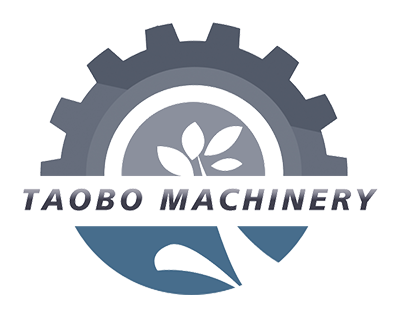The screen surface of a pneumatic screen cleaner is the core component for accurately grading and separating impurities from materials (such as beans and grains). Its cleanliness and integrity directly determine cleaning accuracy and equipment efficiency. Screen surface maintenance should focus on preventing blockage, wear, and timely repair, integrating daily cleaning, regular maintenance, and troubleshooting into a comprehensive process. The specific methods are as follows:
1. Screen Surface Cleaning: Remove impurities based on specific scenarios to prevent blockage.
The main causes of screen surface blockage are fine debris (dust, particles), sticky impurities (moist materials), or foreign matter stuck in the screen holes. Depending on the degree of blockage and the stage of operation, a three-level cleaning method is used: immediate cleaning, downtime cleaning, and deep cleaning.
1. Daily Immediate Cleaning (during operation/between intervals, high frequency)
Applicable scenario: When a small amount of floating debris remains on the screen surface during operation, this method can prevent further blockage without requiring downtime.
Operation steps:
If the machine is equipped with a “rotating sweeping brush” or “spring-tooth cleaner,” enable automatic mode. The brush/spring-tooth mechanism will sweep away any debris on the screen surface in real time, allowing the debris to fall into the debris channel as it vibrates.
If the machine does not have an automatic device, use a soft-bristled brush to gently sweep along the “screen vibration direction” during breaks in operation (e.g., when feeding is paused), focusing on removing fine dirt and debris from the edges of the screen holes.
2. Daily cleaning (required after operation)
Applicable scenario: Removing stubborn impurities remaining after a day’s operation (such as damp, clumped impurities, or foreign objects stuck deep in the screen holes). This requires shutting down the machine and disconnecting the power supply.
Tools: Soft-bristled brush, plastic sieve needle (diameter slightly smaller than the screen hole), vacuum cleaner (with a flat nozzle).
3. Deep cleaning
Applicable scenario: Thorough cleaning is required for areas with oil, mold (when the material is damp), or stubborn impurities that have accumulated over time. 2. Screen Surface Maintenance: Regular Inspection + Preventive Repair to Extend Lifespan
The key to screen surface maintenance is to detect problems early to prevent minor faults (such as wear and deformation) from escalating into major problems. This requires a pre-operation inspection and regular deep maintenance:
1. Pre-operation Quick Inspection (5 minutes before each machine startup).
Focus on identifying key issues that affect screening and ensuring safe equipment operation:
Screen Surface Condition: Observe the screen surface for bulges, depressions, or deformation (deformation can cause material accumulation and uneven screening). Check the screen openings for “hole enlargement” (larger aperture due to impact from hard impurities), “curling” (edge wear), or “cracks” (damage between openings). If present, temporary repairs (such as replacing a portion of the screen surface) are necessary.
Fixed Components: Check the screen surface for loose bolts and clips (looseness can cause the screen surface to vibrate and move, resulting in abnormal noise and poor accuracy). If loose, tighten with a wrench (use moderate force to avoid excessive pressure that could cause deformation).
2. Regular Deep Maintenance
Preventatively repair or replace the screen surface for problems such as wear and aging.
3. Screen Surface Replacement Standards
The entire screen surface must be replaced to avoid compromising cleaning accuracy when the following conditions occur:
Metal screen surface: Mesh hole enlargement exceeds 20%, damage exceeds 30%, or overall flatness deviation exceeds 5mm;
Plastic screen surface: Visible signs of aging (brittle surface, discoloration), more than 5 cracks, or mesh deformation exceeds 15%;
The screened material purity is consistently below 95% (normally ≥98%), and no other component failures (such as insufficient air volume or uneven feed) have been detected. III. Key Considerations: Avoiding Human Damage and Optimizing Maintenance Effectiveness
Preventing Hard Impurities from Impacting: Ensure the bar spacing of the primary cleaning screen (grid screen) is appropriately sized for the material particle size (e.g., 13-15mm for the kidney bean primary cleaning screen). This thoroughly intercepts hard impurities such as large stones and metal lumps, preventing them from entering the main screen and impacting the screen surface.
Controlling the Feed Rate: Overfeeding is strictly prohibited. Excessive feeding will cause material to press against the screen surface, increasing screen wear and reducing screening accuracy.
Material Compatibility: When changing material types (e.g., from kidney beans to soybeans), the screen surface must be replaced with the corresponding aperture (the upper screen aperture should be slightly larger than the material particle size, and the lower screen aperture slightly smaller). This prevents mismatched screen apertures from causing missed selection or residual material.
This closed-loop maintenance process of “clean – inspect – repair – replace” ensures the screen surface is always in good working condition, ensuring accurate material cleaning, extending the screen surface life, and reducing equipment maintenance costs.
Post time: Sep-30-2025







